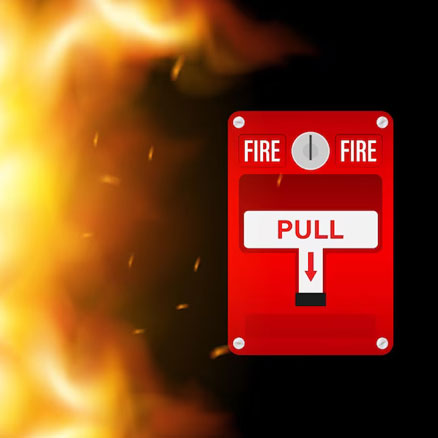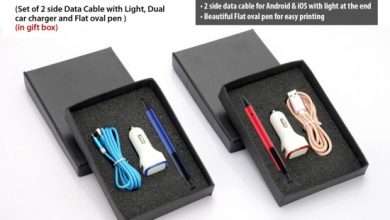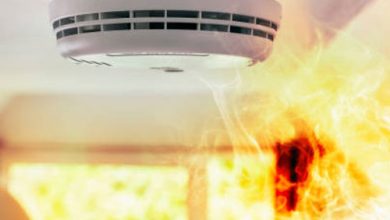Step-by-Step Guide to Choosing the Right Automatic Fire Alarm System
automatic fire alarm system

Choosing the right automatic fire alarm system for your building is not just a regulatory obligation—it’s a life-saving decision. With so many options on the market, selecting a system that matches your building’s size, layout, and usage can be challenging. At Sri Triveni Crafts, we understand the importance of tailored fire protection solutions and are here to guide you through the process.
In this comprehensive guide, we break down the key steps to help you choose the perfect fire alarm system for your needs.
Step 1: Assess Your Building’s Fire Safety Requirements
Understand the Layout and Risk Factors
The first step is to evaluate the building’s structure and potential fire hazards. A small office will have different requirements than a large warehouse or commercial complex. Consider factors like:
-
Building size and number of floors
-
Type of occupancy (residential, commercial, industrial)
-
Fire-prone areas (kitchens, electrical rooms, storage areas)
This assessment will help determine the scale and complexity of the fire detection alarm system needed.
Step 2: Choose the Right Type of System
Conventional vs Addressable Systems
There are two primary types of fire alarm systems:
-
Conventional fire alarm systems divide the building into zones, helping responders locate the fire by zone.
-
Addressable fire alarm systems provide pinpoint accuracy, identifying the exact device that was triggered.
For larger or high-risk environments, an addressable system connected through a centralized fire alarm control panel offers better performance and quicker response times.
Step 3: Identify the Right Components
Sensors and Detectors
A reliable system includes a range of components working together. You’ll need devices like:
-
Fire smoke detectors to detect smoke particles
-
Heat detectors for areas where smoke detection isn’t ideal (e.g., kitchens or workshops)
-
Fire alarm sensors that activate alarms when fire is detected
-
Audible and visual fire smoke alarms to alert occupants
Each component plays a vital role in early detection and warning.
Step 4: Select a Suitable Fire Alarm Panel
The fire alarm panel is the brain of your system. It monitors inputs from sensors and controls outputs such as alarms and notifications. Choose a panel that matches your system’s size and offers features like:
-
Touchscreen display for easy control
-
Compatibility with other building systems
-
Scalability for future expansion
Working with experienced fire alarm manufacturers ensures you get a durable and user-friendly control panel.
Step 5: Ensure Compliance with Fire Safety Standards
Follow Local Codes and Guidelines
It’s essential to comply with local fire safety regulations and building codes. Installers should follow national and regional standards to ensure your system meets the necessary legal requirements. Failure to comply can result in fines, insurance issues, or operational disruptions.
At Sri Triveni Crafts, we provide fire alarm systems that are fully certified and compliant with industry standards.
Step 6: Consider System Integration
Many modern workplaces use smart building systems. Your automatic fire alarm system can be integrated with security systems, elevators, HVAC units, and more. This improves overall safety by allowing synchronized actions like shutting down ventilation or unlocking emergency exits during a fire.
Step 7: Evaluate Monitoring and Maintenance Needs
Once installed, the system needs to be monitored and maintained regularly. Consider whether you’ll need:
-
Remote monitoring capabilities
-
Scheduled testing and maintenance support
-
Battery backup for power outages
Regular servicing ensures every fire alarm system component—from the fire smoke detector to the control panel—remains in optimal working condition.
Step 8: Work with a Trusted Manufacturer and Installer
Don’t compromise on safety by choosing unverified vendors. Trusted fire alarm manufacturers provide high-quality systems and professional support from installation to maintenance.
Sri Triveni Crafts offers customized, end-to-end solutions for commercial and industrial clients. We ensure that each system is thoughtfully designed, expertly installed, and backed by responsive service.
Conclusion
Investing in the right automatic fire alarm system is one of the smartest decisions you can make for your building’s safety. From selecting suitable detectors and panels to ensuring integration and compliance, each step is crucial for building a robust fire protection setup.
At Sri Triveni Crafts, we take pride in offering reliable fire alarm solutions tailored to your specific needs. Visit www.sritrivenicrafts.com/ to explore our fire safety systems and speak with our experts.
Frequently Asked Questions (FAQs)
1. How do I know which type of fire alarm system I need?
It depends on your building size, type, and fire risk level. A professional assessment can help determine whether a conventional or addressable system is best suited for your needs.
2. How often should I replace or upgrade my fire alarm panel?
Most panels last 10–15 years. However, upgrading may be necessary sooner if you expand your building or require integration with newer technologies.
3. What’s the role of a fire smoke detector in the system?
A fire smoke detector senses smoke particles and triggers the control panel, which then activates the alarm and other safety measures.
4. Are fire alarm systems expensive to maintain?
Routine maintenance is affordable and essential for system reliability. The cost is minimal compared to the potential damage of an undetected fire.
5. Can I install the system myself?
It’s strongly recommended to use certified professionals. Incorrect installation can lead to malfunction and non-compliance with safety regulations.




